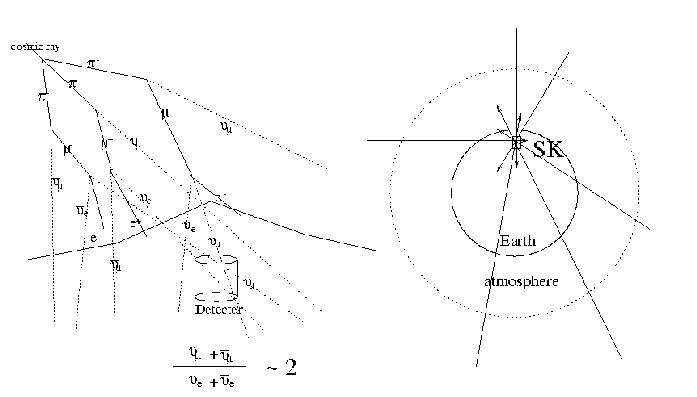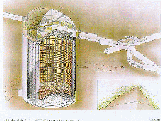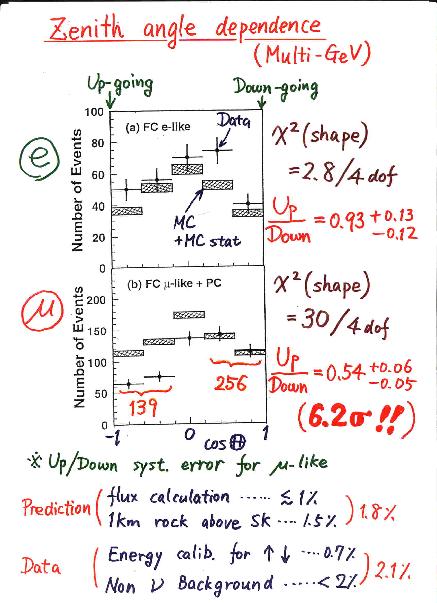Atmospheric neutrino
Atmospheric neutrinos are decay products of pi and K mesons created in
interactions of primary cosmic rays in the atmosphere. From relatively
simple arguments based on knowledge of the dominant
decay chain, the ratio of the number of muon-neutrinos to electron-neutrinos
is expected to be approximately two.

The Super Kamiokande collaboration reported, using 25.5kton*yr of detector
exposure, that the number of muon-like events had a significant
deficit compared with more precise predictions based on theory and detailed
simulations of the detector. ("25.5kton*yr exposure" means that
the 22.5 kilotons of water "target" used in the analysis were
observed for a little over a year.)
To avoid any difficulties related to the prediction of the
absolute total number of neutrinos expected from cosmic rays,
the group presents the data as a ratio of muon-type to electron-type
events. This ratio for data is compared to the expected ratio:
Defining R(mu/e):
R(mu/e)Data/expected = (mu/e Data)/(mu/e expected) = 0.66+_0.06+_0.08,
where first error is statistical and second error is systematic.
If the basic theory is correct, this ratio of ratios should be 1.
Furthermore, the group reports that
R depends on the direction of events. In particular, the
value of R reported for events coming downward, where the
neutrinos travel only a few tens of kilometers after production
is lower than the value for upward going events initiated by
neutrinos which have travelled across the whole earth.
The deficit in muon type neutrinos, and especially the
"zenith angle dependence" observed is evidence
for neutrino oscillations.
This evidence will be tested in a controlled environment by the
K2K experiment. If neutrino oscillations are in fact the cause of
this anomoly, and if the parameters of the phenomena are as
suggested by the Super Kamiokande result, this experiment will
most likely see a large and direct signature for the effect.
|


